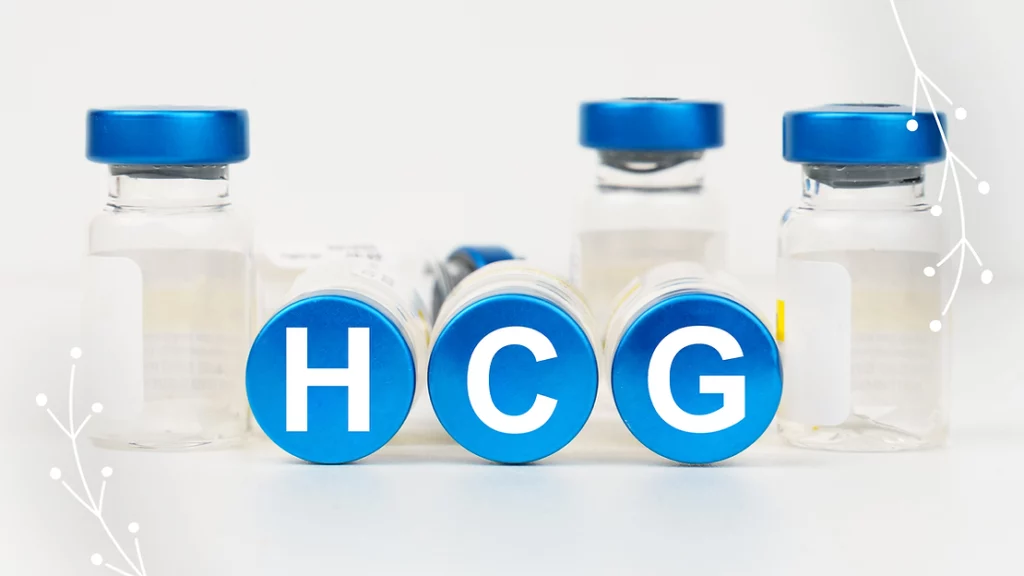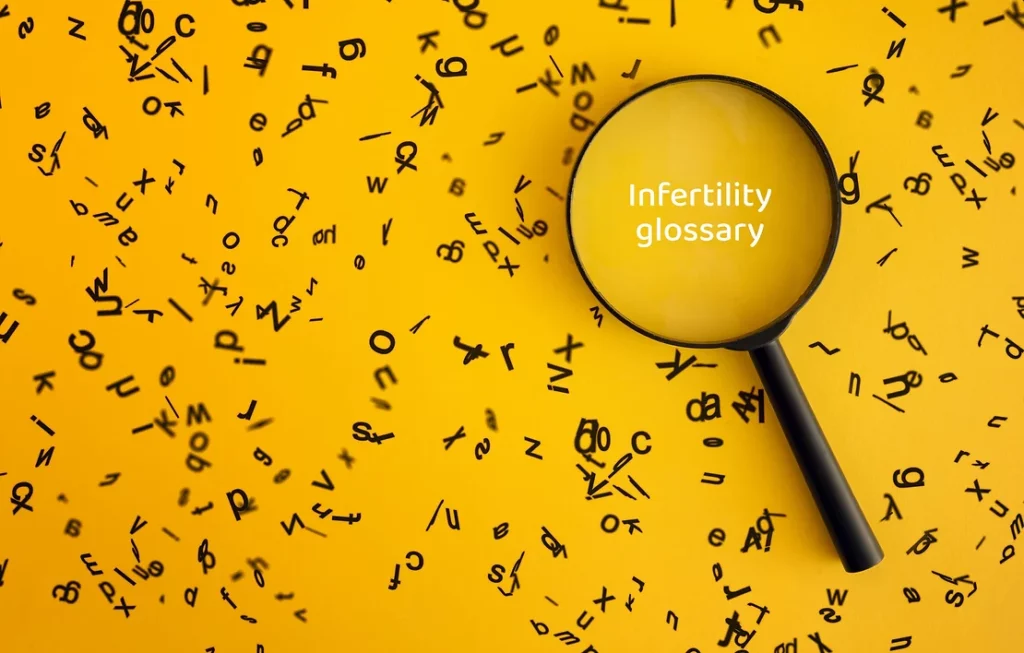An unusual story to reassure you that there is no need to fear the oocyte retrieval procedure.
We woke up very early on the day of the oocyte retrieval (OCR). We had to be at the clinic by 7.30AM, as my OCR was scheduled for 9.30AM.
I followed the list of instructions I received by the clinic: slippers, robe, and ID cards ready to go. The only thing left to do was to iron my favourite nightie. My husband did it for me because first of all, he is much better at ironing than I am, and second of all, as he said, it was his participation in the oocyte retrieval. I was not allowed to eat, drink, or smoke after midnight, because the oocyte retrieval might be performed under general anaesthesia. The clinic also asked me to remove nail polish or artificial nails (but I don’t wear any so I did not have to concern myself with that).

I could not believe that altogether the whole procedure took only 10 minutes. I would not call it the most comfortable experience of my life, but I would definitely not call it painful either; if anything, it was absolutely tolerable.
We arrived at the clinic on time and as planned. After a quick check-in, during which we filled out several forms, we were asked to say goodbye for a while because we both had important tasks to fulfill separately. We had enough time for one more kiss and a “it’s going to be alright” hug - reassuring each other that everything will go smoothly.
A very kind nurse guided me to one of the preparation rooms and asked me to change and get ready for the procedure. When I stepped out of the bathroom in my freshly ironed nightie, I met a doctor in the room who wanted to have a last consultation with me before the oocyte collection. He informed me that due to the COVID-19 situation the hospitals are ordered to minimise the number of anaesthesia procedures (probably because the anaesthesiologists were busy with seriously ill Covid patients). He proceeded to explain to me that general anaesthesia is not absolutely necessary in my case because of my low egg count. He reassured me that all will be fine and promised me that there is nothing to worry about. I was not able to answer anything other than a very weak “OK”.
I asked for just five minutes to calm myself down a little bit. I laid down on the bed and tried my best to meditate (thank God I could finally use what I learnt in my online meditation classes). After a little while I got to take anti-anxiety medication prior to surgery. I would have preferred to take a few more than just one but the kind nurse reassures me that one would be enough.
While waiting for my painkiller injection, I started to recall everything that I have learnt about the oocyte collection procedure. The doctor will use an ultrasound probe with a needle attached to it, and he will insert the needle through the vaginal wall into my ovaries in order to reach my follicles. Afterwards, they are going to use the needle to suction out the fluid from the follicles and, hopefully, the oocyte will be retrieved along with it.
I have decided not to call my husband and tell him that I will undergo this procedure without general anaesthesia as I did not want to worry him during his semen collection. So I just continued to relax and meditate until it was time for the oocyte retrieval.
The nurse returned to let me know what the team was ready for me and she showed me the way to the surgery room. It looked similar to a normal gynaecology room except that everything looked and smelled very sterile. I was asked to lay down on the bed and they double checked my name and my birth date to make sure that all my oocytes were going to be labelled correctly. My doctor promised to explain everything to me throughout the procedure. He even showed me the monitor where, like he said, I could check if he was doing his job properly. On the screen I saw my five amazing follicles - they looked like little berries inside of a balloon.
The doctor then asked for my final confirmation to make sure that I was ready and he began the collection. I could only feel a slight sting during the insertion and right after that I could see how he reached the follicles one by one. After just a few minutes he told me that I did a great job and that we were DONE. My five incredible eggs came out of their follicles and they were ready to go to the lab to meet the “boys”. Mission accomplished!
I could not believe that altogether the whole procedure took only 10 minutes. I would not call it the most comfortable experience of my life, but I would definitely not call it painful either; if anything, it was absolutely tolerable. The main trick is to remain still and not move despite the discomfort.
I know that my story is a little bit unusual because 95% of you are going to have an oocyte retrieval under general anaesthesia, which will allow your surgeon to take their time to collect all of your oocytes - and hopefully it will be a greater number than in my case. Nevertheless, I felt like it was important to share my experience to reassure you that there is nothing to be afraid of during an oocyte retrieval.
Why we need a Trigger Injection for oocyte maturation, and why it is so important to use it properly.
Let's learn the basics about the Trigger shot stage of the IVF treatment. Ovarian follicles are small fluid-filled sacs in the ovaries. Inside of each follicle is an immature egg, which grows and undergoes a set of changes. After the follicle reaches its optimal size, ovulation occurs and the mature egg is released.

After the Trigger Shot, I spent the next 36 hours before the egg retrieval relaxing and preparing myself for the egg collection.
During my ovarian stimulation period, I had two ultrasound appointments to check how my ovaries reacted to the hormone injections. I was quite surprised that a simple ultrasound test was able to detect my follicles. At the first appointment, we found four follicles, two on each ovary, and later on, one more little miracle follicle showed up on the screen. By the end of the stimulation stage, my ovaries developed five good looking follicles.
Five follicles is not a big number if we compare it to the optimal figure. Usually, anywhere between 8 and 15 follicles is considered an acceptable amount for an IVF treatment. Even though I received a fairly high dosage of fertility drugs, my ovaries reacted poorly to the stimulation. However, it only takes one egg to succeed, so the game has not been over yet!
The great news was that all of my follicles were a good size. When a follicle reaches the measurements between 16mm and 22mm, it is more likely that it contains a fully mature egg, which is ideal for the IVF process. All of my follicles reached this size, so it was definitely a small victory. The doctor also checked the thickness of my uterine lining, which was 12mm, and found it to be optimal for implantation.
The doctor gave us the green light to move forward to stage 2: the Trigger Shot, also called the Trigger Injection. The Trigger shot sends the eggs into meiosis (a state of reproductive division), and helps them to mature for egg collection. The objective is to decrease the number of chromosomes in the eggs from 46 to 23 prior to egg retrieval. If exactly 23 chromosomes are not present in the egg that undergoes fertilisation, it will not be able to create an embryo. I see now why it is so important.
The Trigger Shot usually contains the HCG hormone, which is the famous “pregnancy hormone” that we are looking for while taking a pregnancy test. After receiving the injection, ovulation can start between 36-48 hours. I had to use this single shot exactly 36 hours prior to my scheduled egg collection appointment. The most important step of the Trigger Shot is the timing; the success of the fertility treatment greatly depends on it and its effect on the quality of eggs. To make sure I did not forget this important task, I scheduled the shot in the Leeaf calendar, and waited for the selected time.
Injecting the Trigger Shot is exactly the same process as administering the daily hormonal stimulation shots, so there is nothing to be concerned about.
The first stage of our IVF cycle began with ovarian stimulation.
Per my doctor’s request, I went to the fertility clinic on the second day of my period for a final check up to make sure that it is safe to start our IVF treatment. The examination was quick and easy; it was only a simple ultrasound test and also the last pre-treatment evaluation, which is done to check the presence of any ovarian cysts. The absence of ovarian cysts is important because they can interfere with proper egg development during the treatment. Fortunately, there were no signs of any cysts, so nothing could hold us back from starting our fertility treatment this month. We were ready for stage 1: the ovarian stimulation.

I had to administer the hormone injections every day for five days. After that I came back to the clinic to find out how my ovaries reacted to the stimulation and how many follicles started to grow.
After the ultrasound examination, I received the stimulation protocol from my doctor. He explained that the medication plan is based on my previous test results. It is one of the reasons why we needed to do the previous blood tests. My AMH (anti-müllerian hormone) level was pretty low, so I needed a higher dosage of stimulation drugs.
But what actually is a controlled ovarian stimulation (COS)? During the ovarian stimulation phase of IVF, I used injectable fertility medication to stimulate my ovaries to produce multiple mature eggs. The injections that I used contained follicle stimulating hormone (FSH), which is necessary for ovaries to produce follicles, and luteinizing hormone (LH), which stimulates the growth of small follicles. The average length of the stimulation is 7-10 days, but in some cases it can take a couple of weeks before the medication starts working. The duration mainly depends on how the ovaries respond to the stimulation.
The right stimulation protocol highly affects the outcome of the treatment. I am sure that the process is more complicated than this, but generally speaking, if the stimulation dose is too small, none or only a small number of eggs are retrieved, and the IVF success rates decrease. On the other hand, if the dose of gonadotropins is too high, the woman is at a higher risk of hyperstimulation, also known as Ovarian Hyperstimulation Syndrome (OHSS). It is an exaggerated response to too many hormones and it can cause swelling to the ovaries, which can become painful. What is interesting about the whole stimulation process is that the same IVF protocol may work more successfully than others simply due to the different amount of available follicles. The instructions were clearly written down on the paper I received from the doctor, nevertheless, it was definitely comforting that a nurse explained everything about the injection pens and how to use them. I had to administer the first dosage of hormones to myself with the guidance of the nurse, and she said that I did it very well 🙂 Here are some tips from the nurse:
- Keep the drugs and the injectable pens in the fridge but leave them out at a room temperature for 20 minutes before administering them. Injecting a cold fluid can be unpleasant.
- Try to administer the injections in the same 4 hour window every day.
- To avoid skin irritation and soreness, alternate injection sites every day. One day use the right side of the belly (or the right thigh), the next day use the left side of the belly (or the left thigh).
If we cannot conceive naturally, it’s good to know which options we have in the world of artificial reproduction treatments (ART).
When we are confronted with the fact that we are not able to have a child in the natural way, we are directed to a fertility center. At the clinic it’s easy to get overwhelmed with all the new information we have to take in. As beginners, we didn’t even know which are the ways to consider or what are the differences between the different forms of fertility treatments. The most commonly known fertility treatment is IVF, but it’s not the only one. But which are real options for us, and which direction should we take?

"We also have to talk about the classic in vivo fertilization. Simply put, have sex because anything can happen at any time."
The first two are relatively simple solutions to treat infertility, such as Planned Intercourse and Artificial Insemination.
The simplest fertility treatment is called Planned (or Timed) Intercourse. In this procedure a mild ovarian stimulation can be involved, promoting the growth of 2-3 follicles ideally. If the follicular growth is optimal (the doc checks it though ultrasound), ovulation can happen naturally or can be provoked by a trigger injection. By the end of the process the doctor will determine the days when it is most recommended to be together (have sex). This is a relatively natural fertility solution with some extra help. I think it’s an option for couples with good test results.
The second option is Artificial Insemination. The treatment starts with hormonal ovarian stimulation, and followed by a trigger injection. Even the most fertile days are determined by the doctor. However, the fertilization doesn’t take place by natural intercourse. By the end of the stimulation phase the male partner is asked for sperm collection. Sperms that have been washed and concentrated are placed directly in the woman’s uterus, cervix or fallopian tubes around the time the ovaries release one or more eggs to be fertilized. Insemination is usually recommended when everything is fine with the sperm and the woman’s fallopian tubes (or at least one of them) are permeable. The procedure is completely painless, it’s less expensive compared to IVF, but the success rate is lower: only 15-20%.
The next option is IVF (In Vitro Fertilization), which I think is the most known fertility treatment type. The main difference compared to the previous treatments is that the fertilization happens outside the body – ‘in vitro’ means ‘in a test tube’. The procedure is longer, more expensive, more complicated and involves a higher hormonal load than insemination.
What are the main stages you are going to undergo during an IVF treatment?
- Ovarian Stimulation. The goal of ovarian stimulation is to achieve multifollicular development by administering daily hormone injections, hoping more follicles, more eggs will be available for fertilization. There are several different medication protocols in use to achieve this. In the case of short protocol, the stimulation starts on Day 2 or 3 of the menstrual cycle, and takes about 7-11 days. The long protocol can take up to 4 weeks. It starts on Day 20 of the menstrual cycle with a 10-day long medication which helps to shut down the ovaries first. In step two the same ovarian stimulation starts as in the short protocol.
- Trigger Injection. If the follicles are sufficiently mature, the Trigger helps the growth and maturing of eggs.
- Egg retrieval, and Sperm Collection. 36 hours after the Trigger Injection the Egg Retrieval is going to take place. Using ultrasound, the fluid containing the eggs is collected from the follicles through the vagina with a needle. At the same time sperm is collected from the male partner.
- Fertilization. After collection, the eggs and sperm are cleaned in the embryologist’s laboratory, then a group of sperm is put together with the eggs to be fertilized. Practically the same thing happens in the incubator as in nature. There is no special intervention, they just organize a date between the eggs and sperm.
- Embryo development. The fertilized eggs spend 3-5 days in a special incubator at the embryology lab. The embryo divides and multiplies its cells. The embryologist selects the most viable embryo(s) for transfer by the end of the process.
- Embryo transfer. 3-5 days after fertilization, the most viable embryos are transferred back to the uterus with a simple, quick and painless procedure.
- 2-week-wait. The time period from embryo transfer to pregnancy test. If all goes well, implantation takes place during this time, and the embryo attaches to the uterus lining and continues its development there.
It’s also good to know about ICSI (Intracytoplasmic Sperm Injection), as a special type of IVF treatment. It is practically one of the methods used in egg fertilization. It is usually recommended when sperm quality is not the best, or only a few eggs are available for fertilization. During ICSI procedure the embryologist selects the most beautiful and healthiest sperm and injects it directly into the egg. This can increase the chances of successful fertilization.
We also have to talk about the classic in vivo fertilization. Simply put, have sex because anything can happen at any time. We can meet a million wonderful stories; I also have several close friends who once had a baby arriving magically. Yet they had a paper about that impossibility. Never give up!
During our first IVF attempt, we came across a lot of new terminology and information in a very short time, and it was quite challenging to take it all in. We were very familiar with some of the information that was given to us, and slightly less familiar with some of the more technical terms and procedures. By all means, a lot of material was completely new to me, even though I attended biology classes at school, but there may be a slight chance that I did not pay enough attention. Live and learn! There is no shame in having a little refreshment course.

It can be very beneficial to have a better understanding of what is happening in our bodies and reproductive system, so here are some basics that we all should be familiar with. Let’s start with the ladies!
Ovaries: they are small, almond shaped glands, and primary female reproductive organs. They are located on either side of the uterus, at the end of each fallopian tube. The ovaries have three main functions: they produce and store all the eggs a female is born with; they produce female hormones estrogen and progesterone; the ovaries release, usually, one egg during each menstrual cycle for fertilisation.
Follicle: a follicle is a small fluid-filled sac located in the ovaries that contains a developing egg. During each menstrual cycle, several follicles begin the maturation process. However, usually only one of the follicles reaches maturity and becomes dominant. Later on, this follicle is selected to grow until it is ready to release the egg, which is ready for fertilisation.
Egg: also called ovum, is the female reproductive cell. The eggs are located inside of the follicles in the ovaries. Interesting fact is that females are born with all of their eggs that they will have during their lifetime. Their initial number reaches hundreds of thousands, but drops to about 200,000 by adolescence, and continues to decrease with age. The egg is the largest human cell, and measures about 0.1 - 0.2 mm in diameter. During ovulation, the egg leaves the follicle and enters the fallopian tube where it awaits fertilisation.
Fallopian tubes: also called uterine tubes, are two narrow, 10-12 cm long ducts that connect the ovaries to the uterus. They have three main functions: they transport the male sperm cells towards the egg, which is waiting for fertilisation in the tube; they provide suitable environment for the process of fertilisation; they transport the egg from the ovary to the uterus. If the fallopian tubes are blocked, an egg cannot meet the sperm, fertilisation cannot take place and pregnancy will not occur.
Ovulation: when a follicle ruptures, the egg is released from one of the ovaries. It typically happens around day 14 of the menstrual cycle. The eggs have quite a short lifespan and are viable only for 12-24 hours. Sperm remain viable for several days inside of the female reproductive tract, therefore 3 days prior to ovulation and 2 days after ovulation are considered the most fertile days for females. This is also called a fertility window, which is a term used very often in the IVF community. During the actual IVF process, ovulation is regulated by hormones.
Menstrual cycle: it is a series of natural changes in hormone production and the structures of the uterus and ovaries. These hormonal changes make it possible for a pregnancy to occur. There are four phases of the menstrual cycle: menstruation, follicular phase, ovulation and the luteal phase. The average menstrual cycle is 24 to 38 days long, however, some women may experience irregular cycles that last shorter or longer amount of time. The first day of the menstrual cycle is the first day of menstrual bleeding, also called a period, which typically lasts 4 to 8 days.
Now that we have covered the ladies, let’s move on to the men!
Spermatogenesis: it is the process of producing and developing sperm. It is a 74 day long cycle during which germ cells, male reproductive cells, develop into sperm with the ability of independent movement and fertilisation. Male testicles produce several million sperm per day!
Sperm: sperm is the male reproductive cell. Some people may use these two words interchangeably, yet, sperm and semen are two different terms; semen is a fluid, which contains sperm, but it only makes up only 5% of the weight of the semen. Sperm cells are very tiny, measuring only 50 micrometers from head to tail. A sperm can travel about 3 mm per minute, and it is viable and capable of fertilisation for 30-50 hours after ejaculation. However, 90% of the sperm in a man’s ejaculate are deformed; they can be misshaped, have a small or large head, or no tail. Just a small percentage of sperm are actually able to fertilise an egg.
Sperm count: it is a measure of the number of sperm in each ejaculation. A normal sperm count ranges from 15 million to 200 million per millilitre of semen. Low sperm count is considered when there are less than 15 million sperm per millilitre, or less than 39 million sperm per ejaculate. This phenomenon is refer to as oligospermia and it affects one in every six couples. Unfortunately, it has been a very serious issue in many developed countries in the last few decades.
Sperm motility: this refers to the ability of sperm to move forward and progress for at least 25 micrometers per second. A sperm analysis examines how many of the sperm are motile. The higher the number, the better. It has been debated for many years that sperm with Y chromosomes, or the “boy” sperm, can swim faster than sperm with X chromosomes, known as the “girl” sperm. However, it has been proven to be a myth.
Sperm morphology: the semen analysis test examines sperm morphology, which refers to the size, shape and overall appearance of a man’s sperm. The results are shown as a percentage of sperm that appear normal. Sperm are examined in order to evaluate male fertility, because the egg can only be penetrated by sperm that have a “normal” shape. Interestingly enough, this will be a fairly low number since many sperm have an abnormal shape. The good news is that there are millions of them and only one is needed to fertilise the egg.
It’s time to take our part of the fertility journey: let’s boost the little guys.
There are very few men left on the planet who don't need any help to boost their fertility. I am not one of them, so I decided to do as much as possible to improve my sperms’ health. I am going to have very little to do during our IVF program compared to my wife, so this is the least I can do to increase our chance of success.

"With any positive changes, we can do a lot to consciously improve our fertility."
Let’s continue to learn more factors which can affect the health of our sperms and male fertility.
- Ideal weight: Both too much and too little fat have a negative effect on hormone production, and sperm health and count. Moreover, in overweight men, fat pads warm the testicles, and as we learned, sperms don’t like heat. Weight is something that we cannot change overnight. Making a significant and healthy change on it, can take months (sometimes even years). Losing or gaining weight should be part of a well-planned preparation. I have 4-5kg extra weight on me, and it is impossible to lose (in a healthy way) in 4 weeks (at least for me).
- Caffeine: The most popular stimulant. That's how I start the day every morning. But keep in mind that energy drinks and cola also contain caffeine. Funnily caffeine can be a double-sharp weapon. In a small amount it stimulates sperm production in small amounts. Great news! However, in larger quantities, it can be one of the causes of sperm deterioration, and also can reduce its quantity. Another important fact that is important to remember, that beverages that contain caffeine, have diuretic effects and may cause dehydration, which is not good at all when we try to conceive. I am a coffee lover but fortunately I am not a big fan of energy and soft drinks. So, it will be easy for me to be a good boy on this.
- Exercise: Sport is one of the best things in the world if you do it within normal limits. It relieves tension (so you can reduce stress), creates good conditions, and makes you balanced. It can help you reach your ideal weight as well. But you don't want to be Schwarzenegger for now. Do not touch anabolic steroids, muscle and weight gainers. Firstly, your testicle can get smaller (you will look stupid), secondly, you can even reset your sperm count with them.
- Toxins: Unfortunately, improper nutrition already delivers a lot of toxins into our bodies. We can come into contact with many toxins at work and home (solvents, cleaners, pesticides) as well. Try to avoid them if it is not possible, or at least use appropriate protective equipment.
Obviously, there are many things listed above that are difficult to change. These are just some important factors – at least - to be aware of. With any positive changes we can do a lot to consciously improve our fertility. And if we were “accidentally” keeping these lifestyle changes for the long term and living healthier by the way, we could hold not only our own child, but hopefully even our grandchildren in our hands. Is it enough motivation? Is there more motivation than that?
Step 1 of preparation: speak the IVF language.
I believe that self-education is a very important step for IVF preparation. You can find plenty of articles and studies to read. One topic is going to lead to another, giving you endless information about IVF and all its details.

"To be honest, it was very difficult for me to understand the comments at first, because of these almost code-like short form terms. It is like a secret language which is spoken by our special community only."
Visiting fertility or IVF forums can be really helpful as well, and these are a great source of information especially for a new bird like me. It helps me to know what is going to happen with me, and I also can gain knowledge from other’s experience (and sometimes learn from other’s mistakes, for example: why don’t take a pregnancy test too early).
I don’t know how much time you have spent on IVF or fertility blogs, but if you have visited at least one, you might have noticed that it’s full of acronyms. To be honest, it was very difficult for me to understand the comments at first, because of these almost code-like short form terms. It is like a secret language which is spoken by our special community only.
To make the life of the new birdies – as myself – easier, I decided to collect the basics of the IVF vocabulary. Have fun, learn a lot, educate yourself!
2WW: 2 weeks wait (from embryo transfer until pregnancy test)
AF: Aunt Flo, Period, or Menstrual Cycle
BCP: Birth Control Pills
BA: Baby Aspirin (low-dose aspirin to improve chances)
BD: Baby Dance (sex)
Beta: HCD pregnancy test
BFN: Big Fat Negative (negative pregnancy test)
BFP: Big Fat Positive (positive pregnancy test)
CB: Cycle Buddy (someone who is on IVF at the same time)
CD: (menstrual) cycle day
DE: Donor Egg
DH: Dear Husband
DI: Donor Husband (sperm donor)
DPO: Days Post-Ovulation
DPR: Days Post-Retrieval
DPT: Days Post-(Embryo)Transfer
DP5DT: Days Post 5-Day Transfer
DW: Dear Wife
EPT: Early Pregnancy Test
ER: Egg Retrieval
ET: Embryo Transfer
Frostie: Frozen Embryo
FSH: Follicle-Stimulating Hormone
HCG: Human Chorionic Gonadotropin (pregnancy hormone)
HPT: Home Pregnancy Test
HX: History
IF: Infertility
IUI: Intra-Uterine Insemination
IVF: In Vitro Fertilization
LMP: Last Menstrual Period (first day)
LSP: Low Sperm Count
MC: Miscarriage
MF: Male Factor
O, OV: Ovulation
OB/GYN: Obstetrician / Gynecologist
OHSS: Ovarian Hyperstimulation Syndrome
PCOS: Polycystic Ovarian Syndrome
PG: Pregnant
PMS: Pre-Menstrual Syndrome
POAS: Pee On a Stick
RE: Reproductive Endocrinologist
RPL: Recurrent Pregnancy Loss
SA: Semen Analysis
S/S: Signs/Symptoms
TTC: Trying To Conceive
TX: Treatment
US: Ultrasound
WNL: Within Normal Limits
How you can improve sperm quality and quantity with some changes in your daily life and habits. Beware, you might notice positive changes in other areas of your life as well.
If you are like me, you never really paid attention to your sperms (I mean in a scientific way). It completely changed when I received my sperm analysis result, and it’s not too great a number. I felt like it’s time to learn more about them (especially when it comes to their parameters).

"Studies show that a smoker has 15% less sperms compared to a non-smoker, and more lazy sperms with abnormal shape."
I read about many factors which can cause sperms with abnormal shape, not enough quantity or pure concentration. BUT I also learned that actually there are many things that I can do, and make improvements on these parameters. These are mainly lifestyle changes, and most of them don't cost too much, I just need to pay a bit more attention and be willing to change.
- Smoking: I was a heavy smoker for 15 years, but I quit 15 years ago though. I know exactly how hard quitting is. (This is not the easiest lifestyle change, I know, but I wanted to start with the most difficult one.) BUT you have to know smoking has a huge negative impact on the quality and quantity of your sperms. The problem is mainly caused by the nicotine (so electric cigarettes are not really an option either). Studies show that a smoker has 15% less sperms compared to a non-smoker, and more lazy sperms with abnormal shape. SMOKING + ABNORMAL SHAPE + LAZY SPERM = NOT IDEAL!
- Alcohol: At this point I started to be worried a bit (I love red wine). Actually, I don’t have to be abstinent (a big release!), I just have to be careful with the quantity. 2-3 glasses of wine or beer weekly won’t do a huge harm on my sperms. A bigger dosage of alcohol would lower the chances of my boys, because they can have an abnormal shape and a smaller army in numbers. It sounds doable to me.
- Drugs: I cannot share any personal experience about this point, but what I learn for sure: they don’t do any good for our hormones. They can reduce our testosterone level, have a negative effect on the shape of sperm, and the sperms go nuts (as you do) if you are on drugs (I don’t know what does it mean exactly, they might move too fast?).
- Heat: It never even would cross my mind. Using my laptop on my laps, or enjoying the comfort of the seat heating in the car actually can overheat my sperms. They don’t need too much heat as they are super sensitive. If they get some extra, unwanted heat on their outer layer, it’s enough for them to die. Riding a bicycle, spending time in a sauna can also cause extra heat. It is also better to switch from hot baths to showers for the health of our sperms. I think here I am going to face some difficulties (laptop usage, love of hot baths and bicycling).
- Stress: I know, it’s easy to say, do not stress these days. At least be aware that too much stress has a huge negative impact on every area of your life. Speaking about sperms: it decreases the concentration, makes them lazy, and will affect the shape as well. So, just take it easy!
There are still a few possible lifestyle changes I would like to share with you in my next articles, but I find it easier to take these changes step by step.
How we won an extra month for IVF preparation. Always see the bright side.
While waiting for the second beta-HCG test unfortunately my period arrived. Of course, I was still hoping that all could still be alright, as you can find many stories of successful pregnancies of women having periods while pregnant. Unfortunately, my blood test confirmed later that the HCG level dropped, meaning the pregnancy ended.
I really needed some time to digest what just happened....

"According to Dr. Lauren Averbuch study, 30-50% of women have had one chemical pregnancy in their fertile years, but many women don’t even know about it if they don’t take a pregnancy test."
The pregnancy was real, that’s for sure. Which is amazing news, because it means I am able to conceive, we are able to make a baby.
I had a ‘chemical pregnancy’, also called a ‘very early miscarriage’, which happens on the fourth or fifth week of pregnancy. Actually, chemical pregnancies are fairly common. According to Dr. Lauren Averbuch study, 30-50% of women have had one chemical pregnancy in their fertile years, but many women don’t even know about it if they don’t take a pregnancy test. This type of miscarriage is usually caused by some kind of chromosomic, genetic abnormality of the developing embryo. It’s somewhat comforting that in almost all articles I read about this topic it was clearly written that it cannot be my fault, I could not do anything to prevent it. I decided to believe it, and not to carry the anxiety with me.
When my period ended, I paid a visit to my doctor. He confirmed that he cannot see anything to worry about. Everything is in great order inside and my uterus lining started to build up again. New month, new chances. ☺ He gave me three good reasons to be positive:
- This unexpected pregnancy confirms that we are able to have a baby. The egg of mine and the sperm of my husband were happy to meet, and they are ready to cooperate.
- Because of the hormonal changes caused by the pregnancy, we have a higher chance to conceive again in the next few months.
- If we are ready, we can start our IVF treatment by my next period.
As we have to wait one more month to (finally) start our first cycle, we decided that we are going to use this extra time for some preparation, and boost our bodies and minds as much as we can.
TIP: Don't drive yourself mental during your fertility journey by getting a diagnosis of your symptoms by Dr. Google. Don’t do this to yourself.
More and more men are affected by fertility problems. Why is this topic not spoken more about?
To make it short, on the second consultation, we got the green light from the doctor to go for IVF, as our only one chance of having a baby. Actually, the plan was that in a week or so, we will start our fertility treatment.

"It never crossed my mind before how much I can do to improve my reproductive health. To be honest, it did not cross my mind either that I have to do anything for it."
As you could read in my previous article, I am going to face our first IVF cycle with my ‘not too tragic’ but ‘not great at all’ semen analysis result. After the stage of ‘Unbelievable’, I entered the phase of ‘Acceptance’, then I started to think about how I can improve my result.
I dived into the world of ART (Artificial Reproductive Treatments), and came across my new favorite word: fertility awareness. We hear about many different awareness and consciousness, but the term ‘fertility awareness’ was completely new for me. It never crossed my mind before how much I can do to improve my reproductive health. To be honest, it did not cross my mind either that I have to do anything for it.
Fortunately, the sperm production is continuous in our body, and takes approximately 3 months to create a completely new army. It means that with some changes in our diet, lifestyle, and habits, we can do a lot for sperm who will be formed in the future. Of course, this cannot happen overnight. It takes about 3 months to notice significant improvement on the result.
Unfortunately, in my case, I had too little information about this topic, and too little time left for big improvement or to correct my bad result. But, of course, it didn’t discourage me to start some changes, because – I believe - every journey starts with one step.
It would be great if this information wouldn’t reach only those couples who are already participating in IVF programs. It’s scary to read that there’s a tendency for men’s fertility to deteriorate from decade to decade, and moreover, typically, men don’t like to test and face it. How much easier it would be to avoid a lot of setbacks, stress and sometimes relationship problems that come with fertility failures. Fertility awareness is all about avoiding these above.
Edit: Our IVF cycle is postponed, because a little miracle happened. Who knows how, but we were able to conceive naturally. We had a chemical pregnancy, meaning that one of my sperm was able to fertilize an egg naturally, but unfortunately the implantation was not successful. This is proof: we can do it! ☺ We have to wait a month to start our fertility treatment, which also means that I gained an extra month to improve (even a bit) my sperm condition.